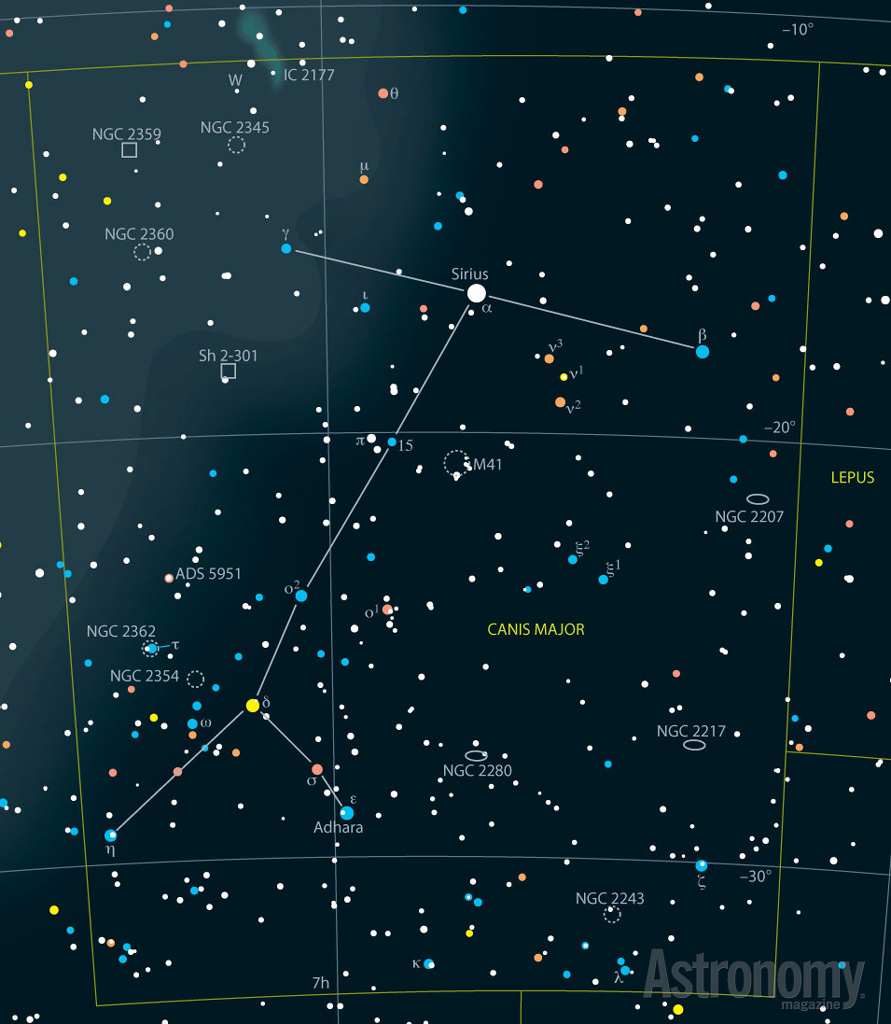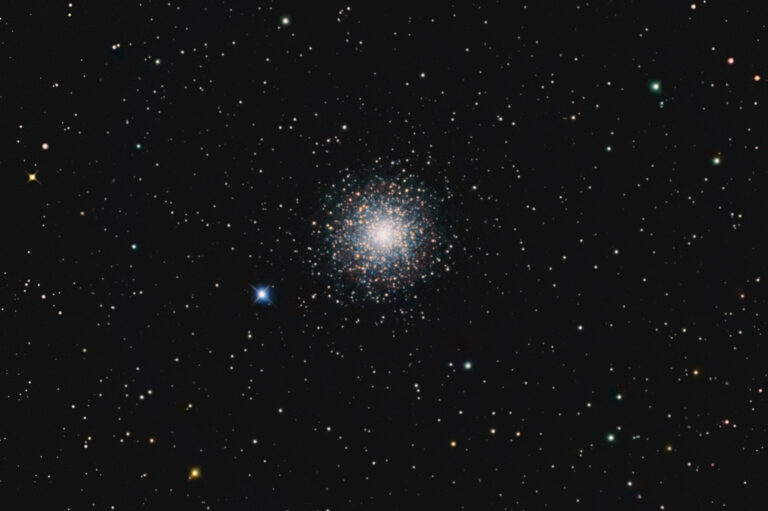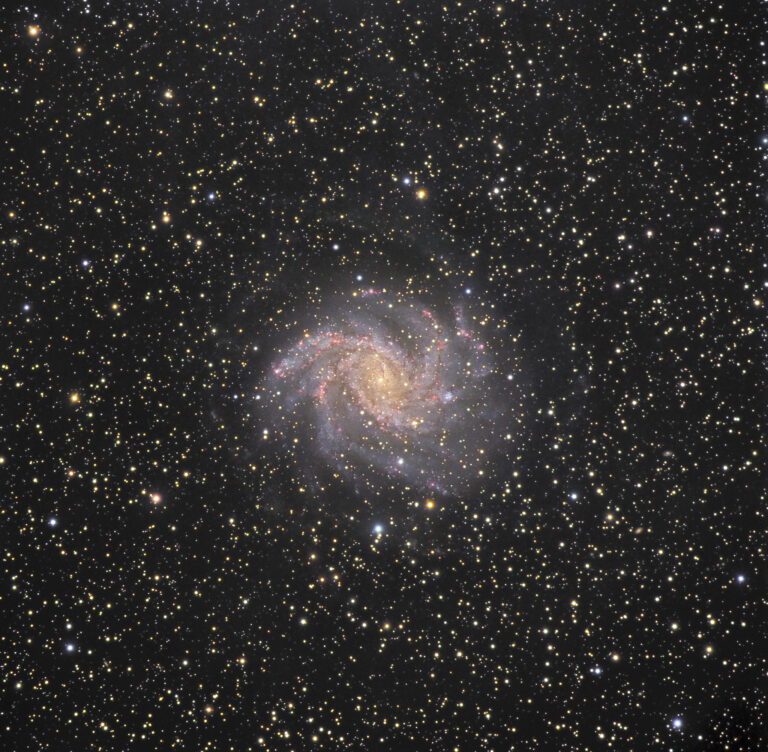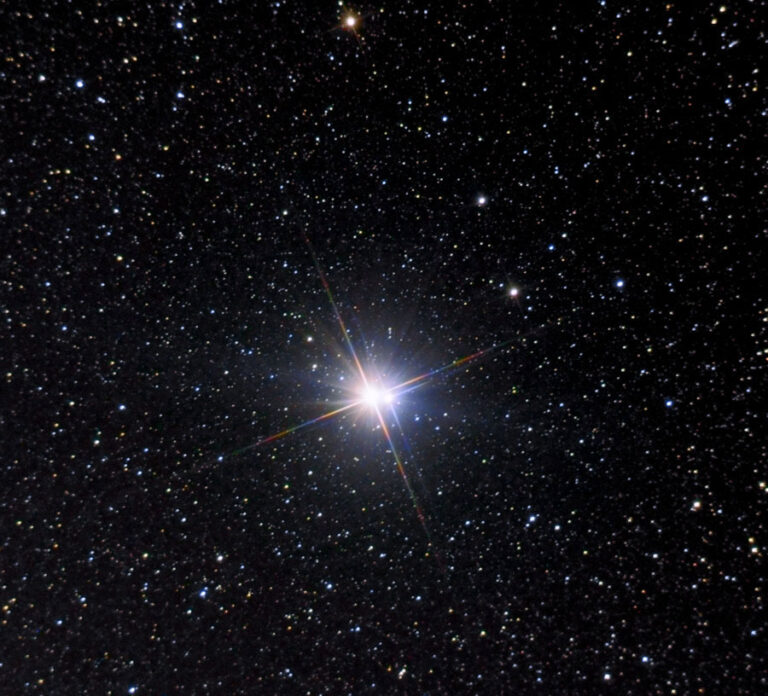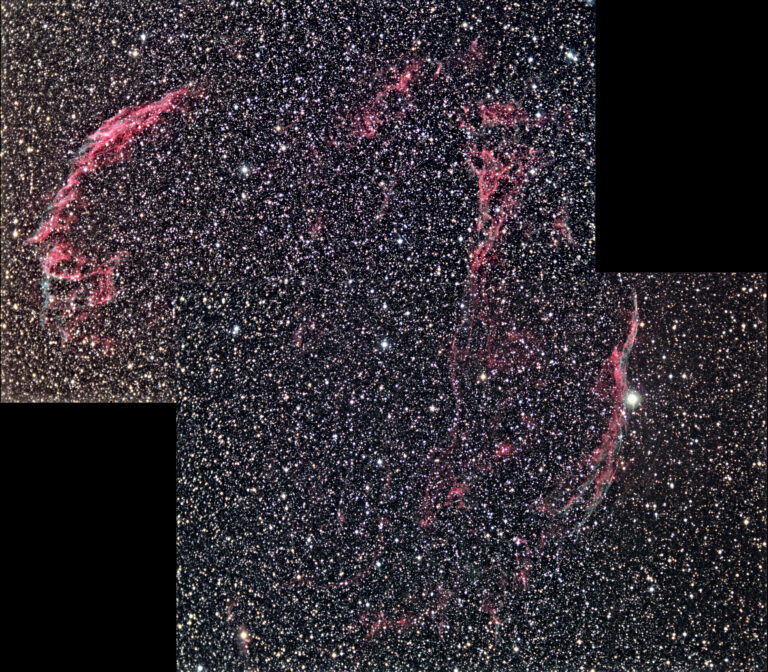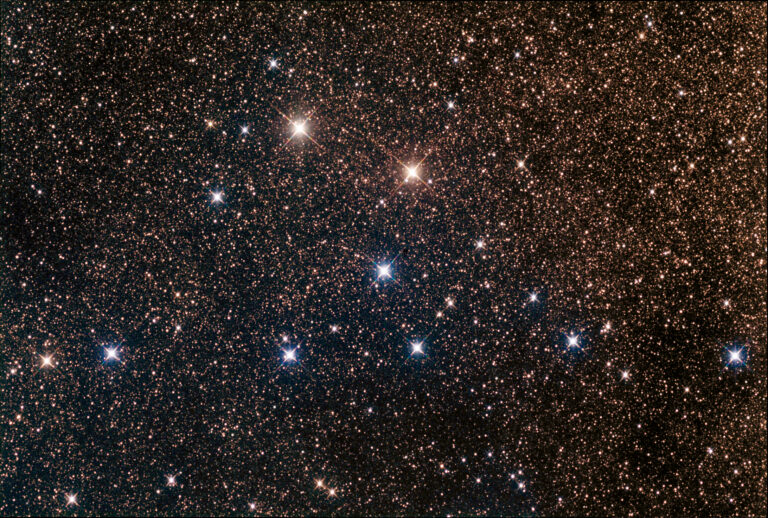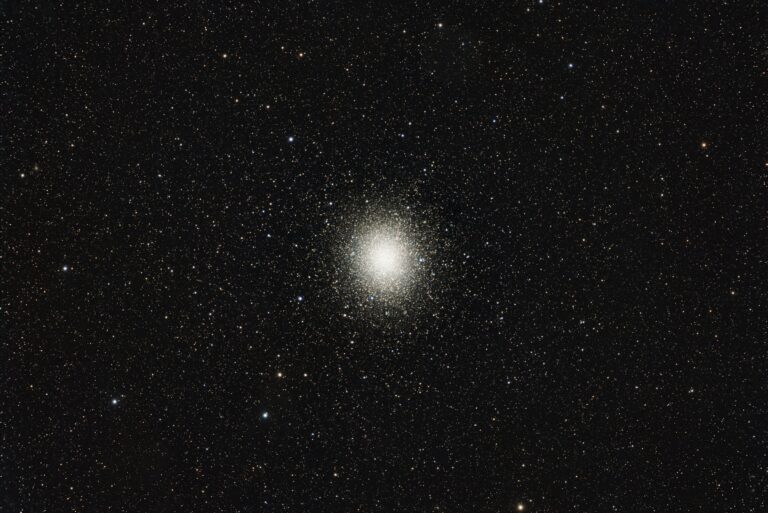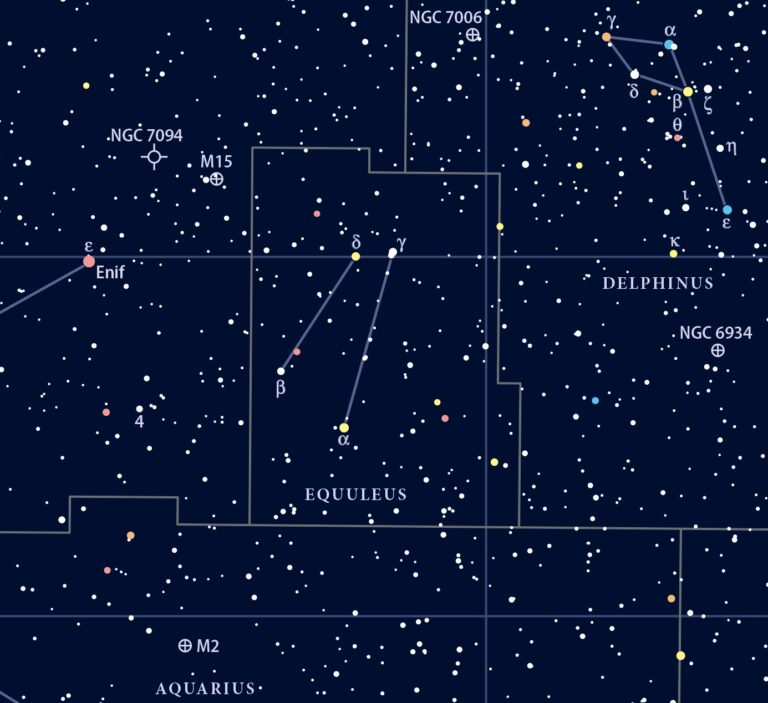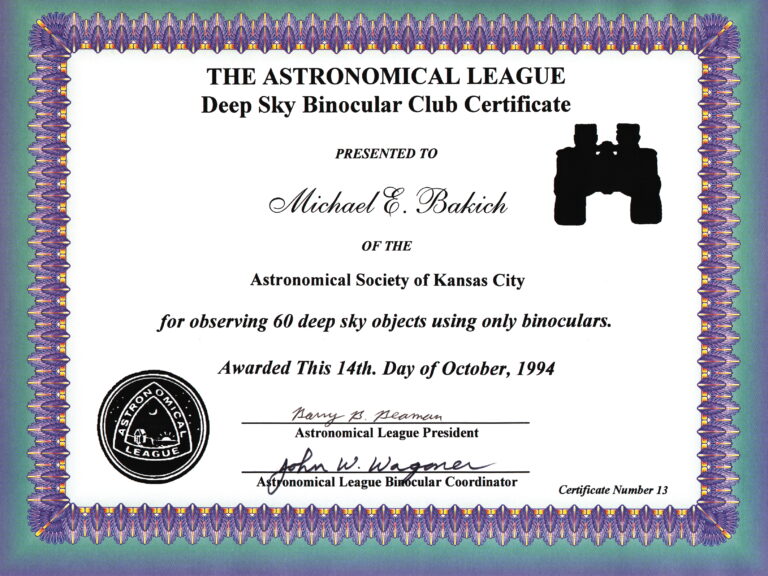Key Takeaways:
- Canis Major, the sixth-brightest constellation, is highlighted as a naked-eye observing target, notable for containing Sirius, the brightest star in the night sky, and being visible from most of Earth's surface except for latitudes above 79° North.
- NGC 2169, also known as the "37" Cluster, is presented as a small telescope target; its appearance resembling the number 37 is dependent on telescope magnification and orientation.
- NGC 2146, the Dusty Hand Galaxy, is suggested as a large telescope target, characterized by its barred spiral structure, dust lanes, and evidence of starburst activity, though the cause remains unclear.
- The article features supplemental resources including a podcast detailing observation techniques and an interactive star map available online.
Targets for January 23–30, 2014
Naked eyes: The constellation Canis Major
Small telescope: Open cluster NGC 2169
Large telescope: The Dusty Hand Galaxy (NGC 2146)
This week’s naked-eye object is the constellation Canis Major. This star pattern lies to the southeast of Orion the Hunter.
The Greeks had several myths regarding Canis Major. In one, this constellation represented the dog Laelaps, given to Hermes’ son Cephalus by his wife, Procris. Another story says Canis Major is one of Orion’s two hunting dogs, either pursuing Lepus the Hare, which lies below Orion, or helping its master fight Taurus the Bull.
Four constellations border Canis Major: Columba the Dove, Lepus the Hare, Monoceros the Unicorn, and Puppis the Stern of the great ship Argo Navis.
Canis Major ranks 43rd in size, right in the middle of the 88 constellations that cover the sky. It covers 380 square degrees; that’s about nine-tenths of 1 percent of the sky.
What Canis Major lacks in size, however, it more than makes up for in brilliance. It’s the sixth-brightest of all the constellations. It contains five of the 100 brightest stars. Only Ursa Major, with six Orion and Scorpius, with seven each, and Centaurus, which has eight stars in the top 100, surpass it. In all, Canis Major contains 56 stars brighter than magnitude 5.5.
The best single date to see Canis Major is January 2, but it’s visible at sometime during each night of fall and winter. In early January, its part of the sky lies opposite the Sun, and it’s visible the whole night. The worst time to look for Canis Major is around the 4th of July.
You can see the Great Dog from most of our planet. It’s completely visible from any location south of latitude 57° north. And it’s completely invisible only from latitudes north of 79° north. Canis Major has no meteor showers associated with it.
And now, a few words about Sirius, Alpha Canis Majoris. The name Sirius means “the scorching one” or “the sparkling one,” but it’s also called the Dog Star and the Nile Star.
This last name comes from its importance to the ancient Egyptians. Egypt’s inhabitants 4,000 years ago watched for Sirius’ first appearance in the eastern morning sky. This event heralded the annual flooding of the Nile River. This event was important to agriculture because, during the flood, the Nile deposited a rich layer of silt over a wide area.
Sirius is not only the brightest star in Canis Major; it also ranks as the night sky’s brightest star. It shines four times as bright as Vega, the blue summer gem of Lyra the Harp, and 25 times as bright as Polaris, the North Star.
You’ll find only one Messier object in Canis Major — open cluster M41, which I covered in a previous podcast. This object is an easy deep-sky target because you can use the sky’s brightest star as a guide to it. M41 lies 4° (or, about half a binocular field of view) south of Sirius. And from a dark site, you’ll easily spot M41 with your naked eyes.
The countdown begins at 37
This week’s small telescope target is the “37” Cluster, also known as open cluster NGC 2169. It lies in Orion the Hunter.
To find this target, first locate magnitude 4.5 Xi (ξ) and magnitude 4.4 Nu (ν) Orionis. NGC 2169 forms the tip of an isosceles triangle roughly 0.8° from each star. Well, sort of. Actually, the cluster lies to the south of the stellar pair. From a dark site, sharp-eyed observers will spot magnitude 5.9 NGC 2169 with their naked eyes.
The cluster isn’t huge — it spans only 6′ — but it contains seven stars brighter than 9th magnitude. Use an eyepiece that gives a 1° field of view and enjoy the wide view of NGC 2169 against the Milky Way’s myriad background stars.
Oh, I almost forgot. The common name the “37” Cluster comes from imaginative observers viewing this cluster at low power and seeing the number 37 in it. (Some see the letters “LE.”) To see the number, you need a view that puts north up and east to the left. Also, a telescope/eyepiece combination that yields a field of view of about one-quarter degree seems to work best.
Dust off your scope
This week’s large telescope target is the Dusty Hand Galaxy. Astronomers refer to this object as NGC 2146, and this barred spiral galaxy lies in the faint northern constellation Camelopardalis the Giraffe.
Locating it without a go-to drive isn’t easy because of the lack of bright stars in the area. I guess the best way to find it is to look 11.6° northeast of magnitude 4.6 Gamma (γ) Camelopardalis.
Magnitude 10.6 NGC 2146 displays a broad central region. Telescopes with apertures of 11 inches or larger show some mottling close to the core and a dark, subtle lane near the southwestern edge. The galaxy measures 5.4′ by 4.5′.
The Dusty Hand Galaxy got its common name from images that show a system of three dust lanes, which may be spiral arms. Astronomers have found clear indications of starburst activity, one of which is a strong galactic wind.
In most cases where other galaxies have displayed strong star-forming activity, a companion is responsible, usually seen merging with the main galaxy. Although NGC 2146 shows no obvious signs of a merger, that scenario seems to be the most plausible explanation. Probably the encounter happened so long ago that no traces are left.
Expand your observing at Astronomy.com
StarDome
Check out Astronomy.com’s interactive StarDome to see an accurate map of your sky. This tool will help you locate this week’s targets.
The Sky this Week
Get a daily digest of celestial events coming soon to a sky near you.
Observing Talk
After you listen to the podcast and try to find the objects, be sure to share your observing experience with us by leaving a comment at the blog or in the Reader Forums.

